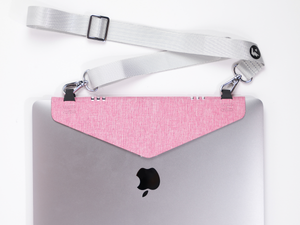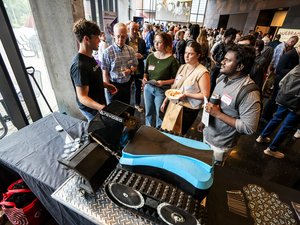
Researchers at the University of Minnesota have developed a unique 3D-printed transparent skull implant for mice that allows them to watch brain activity in real time.
The implant, called See-Shell, allows brain tests that researchers believe could provide new insights for brain conditions such as concussions, Alzheimer's and Parkinson's Disease.
One of the first uses for University of Minnesota-made See-Shell was a study of how concussions in one part of the brain could affect other parts of the brain. Because mouse brains are similar to human brains, researchers hope that See-Shell will also be able to open opportunities to study degenerative brain diseases that affect humans like Alzheimer's or Parkinson's.
"These are studies we couldn't do in humans, but they are extremely important in our understanding of how the brain works so we can improve treatments for people who experience brain injuries or diseases," said Timothy Ebner, head to the U's Department of Neuroscience in the Medical School, in a statement.
Here's what researchers are seeing when they look through See-Shell:
To make the See-Shell, researchers digitally scanned the surface of a mouse's skull, then used those scans to create an artificial and transparent skull that has the same contours as the original. Researchers then perform a surgery where the top of the mouse's skull is removed and replaced with the 3D-printed transparent device
After it's implanted, See-Shell allows researchers to record brain activity in real time. And so far, it seems to be working. The mouse's body did not reject the implant, which means that researchers were able to study the same mouse brain over several months. This allows researchers to study brain aging in a way that they say would take decades to study in humans.
The University of Minnesota has been experimenting with 3D printers to tackle a variety of medical issues. These powerful printers can create things like artificial skin and functional organs. University researchers have also 3D printed a bionic eye. Each electrode on the artificial eye contains a light receptor that could be used to help bypass a damaged retina, effectively converting light into electricity. It's a work in progress, but the team behind the device previously said that it could be ready for human trials within two or three years.
The See-Shell research was funded primarily by the National Institutes of Health with additional support from the State of Minnesota. The University plans to commercialize the device.
"This new device allows us to look at the brain activity at the smallest level zooming in on specific neurons while getting a big picture view of a large part of the brain surface over time," University of Minnesota Engineering Professor Suhasa Kodandaramaiah said in a release. "Developing the device and showing that it works is just the beginning of what we will be able to do to advance brain research."








